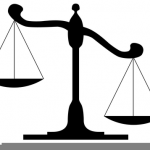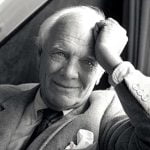A review of A History of Islamic Societies. By Ira M. Lapidus.
Cambridge University Press, 1988.
Just over a decade ago, one could ask whether the greatest threat to Christianity in particular and Western civilisation in general was posed by totalitarian communism or fundamentalist Islam. Illustrative of these twin threats was the year 1979 which witnesses the rise of the Ayatollah in Iran, with the US hostage crisis, and the Soviet invasion of Afghanistan. Both forces seem on the offensive with no sign of losing steam.
Today, the threat of communism as an ideology has largely disappeared (although the military might of the Soviet Union, and the will to use it, is by no means diminished). Militant Islam therefore seems to have become the chief rival to Western values and traditions. Certainly other competing ideologies and ‘isms’ abound, such as secular humanism, radical feminism, New Age-ism, etc. But Islamic fundamentalism is the one trans-cultural, international force most able to challenge the West, especially with its recently acquired muscle of oil power.
Books on Islam and the Arab world written in the last half century number well into the thousands. Some of the better volumes which are both fair yet aware of the potential danger Islam poses include those authored by Daniel Pipes (In the Path of God: Islam and Political Power, 1983; The Long Shadow: Culture and Politics in the Middle East, 1990); David Pryce-Jones (The Closed Circle: An Interpretation of the Arabs, 1989); and any number of books by Bernard Lewis.
There are numerous good surveys and histories of Islam. One very good history written recently is Ira Lapidus’ volume. This book is a scholarly and meticulous study of the diversity and development of Islam as a cultural, religious and social force. The historical evolution of Islam is traced from pre-Islamic Middle Eastern societies, which helped shape the way Islam unfolded, through to its current status. All the major homes of Islam are examined in great detail: the Middle East, the Indian sub-continent, North Africa, sub-Saharan Africa and southern Asia.
The cyclical nature of Islam’s fortunes is traced in panoramic fashion. At the time of Mohammed’s death in 632AD, Arabia was largely won to Islam. Exactly 100 years later, Charles Martel barely halted the Muslim advance in Tours, France, preventing the crescent from taking over Christian Europe. Three centuries later, Crusader kings were knocking at the gates of Jerusalem. By the end of the 17th century, however, the King of Poland narrowly prevailed over the Islamic legions at Vienna. Today Islam is again resurgent.
Just how contemporary Islam will fare in the future is an open question. As Lapidus makes clear, Islam is a divergent, multi-faceted force. In its social, cultural, linguistic, religious, political and ethnic make-up, the world of Islam contains innumerable variations. Certain Islamic states, such as Iran and Saudi Arabia are avowedly Muslim. Others, like Turkey, are highly secularised. In some countries, like the Soviet Union, Muslims are a demographic and political minority. The forces of secularisation, modernisation, industrialisation, nationalism have all impacted on Islam in different ways. The Islamic resurgence (as represented in Iran) is but one response. Lapidus offers no clear answers as to how these interactive forces will develop in the future.
But it is clear that with 900 million adherents, Islam is a force to be reckoned with, however it evolves in the coming years. This book, along with the other authors cited, provides a good introduction to the complex, fascinating and influential world of Islam.
[568 words]




















Dear Scholar,
I am a student of Ph.D Politics & International Relations. I have read this book thouroly and find it the best asset for Islamic history. But, it is stated that writer sometime shows biasness to eloborate the spread of Islam. Some time I realize that he wrote this paragraph or some lines or line after reading a single source. For many times writer highlights the malign sight rather than to show its original code of ethics. Many ftrue sects have been replaced by false add prapogandist sect against Islam. Thanks
Muhammad Nazim Rahim
Irrespective of the review author’s view about Islam, it is a fact that there are 1.57 billion Muslims in the world today, according to several sources.
I wonder where did he pick up the figure 900 million? While not a Muslim, any reduction in the number – and hence the influence of Muslims – led and leads to tragic errors of policy and judgment. Of both we have had bucketfuls in the last two decades, let alone the centuries!
Professor Said’s Orientalism is certainly alive and well!
Richard Burton
The article was written in 1991, that is why it doesn’t have the current approximation of Muslims worldwide.
Leopoldo Trevino